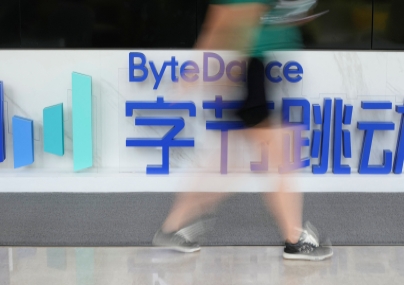Back to top
Time for pharmargers
This year, deals worth more than $153 billion have already been announced so far in the healthcare sector; with even more in discussion and speculation an unprecedented bout of dealmaking that marks the highest figure since Thomson Reuters began tracking relevant data. And what is interesting is that several more are in the works.
Chief among the headline makers has been Pfizer Inc’s disclosure of its $100 billion pursuit of Britain’s AstraZeneca Plc.; Valeant Pharmaceuticals International Inc’s teaming up with activist investor William Ackman, Allergan Inc's largest shareholder, who placed a $47 billion bid for the latter; Swiss company Novartis’ trading assets worth more than $20 billion with GlaxoSmithKline (GSK), and the sale of its animal health arm to Lilly; U.S. drugmaker Mylan seeking to buy Swedish drugmaker Meda AB; Shire Plc and Smith & Nephew’s being reportedly approached as possible targets; and France's Sanofi and U.S. drugmakers Merck & Co and Abbott Laboratories’ exploring selling off their mature drug businesses.
The flurry of dealmaking is potentially reshaping the global pharmaceutical industry, as most large companies try to focus on a small number of leading businesses, while smaller specialty and generic producers seek greater scale, analysts say.
“It is fair to say that the mega merger does not necessarily generate high levels of shareholder value and perhaps we are actually seeing a new approach to M&A where deals are becoming more innovative, and big pharma are resizing and becoming more specialised which may enable them, going forward, to generate shareholder value,” says Sandra Rafferty, corporate partner and head of the UK Lifesciences group of CMS.
These mega deals have demonstrated the tendency to consolidate that is prevalent in the global healthcare industry. It is likely the industry in China will also see great M&A opportunities, albeit for different reasons.
Notably, the campaign to clear up the corruption in the industry which started last year continues. The Ministry of Health announced that a “blacklist” mechanism will be launched to punish the companies and hospital personnel with records of bribery, going up to even as much as depriving them of their licences. The effort, if it proves to be fruitful, could lead to a significant change in the way businesses function and the industrial landscape at large.
Additionally, the Chinese government has announced its plans to reform the medical system through measures such as increasing the coverage of affordable public healthcare and giving more access to private and foreign investors. The authorities have also declared that the pharmaceuticals and biotechnology sector would be a strategic industry to drive the country’s future economic growth. All of these mean massive investment, and great opportunities to capitalise on.
Back to topReforms
Corruption has long been an issue in China’s pharmaceutical industry. It is fuelled in part by the low base salaries for doctors at the country’s 13,500 public hospitals, to whom “commission fee, gifts, “hospitality” and various types of tunnelling offered by “sale reps” from the drug and medical device companies, both domestic and foreign, are tempting.
It is well known that leading pharmaceutical multinational companies (MNCs) were first targeted in the anti-corruption action. In the highest-profile case, GSK was charged by the Chinese police last July for allegedly having funnelled up to 3 billion yuan (308 million pounds) to travel agencies to facilitate bribes to doctors and officials to boost its drug sales over a six-year period starting 2007. Several other big pharma majors including AstraZeneca, Sanofi and Lilly were also investigated for alleged corruption. Others that were reportedly questioned included Bayer, Roche, and UCB.
The crackdown then went on to examine the domestic pharma companies too. In January this year, two executives of the state-owned Sinopharm Group, the largest Chinese drug distributor, including a former vice-president and a former head of distribution network, were detained; and seven sale representatives of domestic drugmaker Gan & Lee were arrested in Hubei province on charges of commercial bribery.
Medical staff were also probed. Chinese state media once reported that during this anti-corruption campaign, in southeastern Fujian province’s Zhangzhou city alone, more than 1,000 doctors, nurses and administrators across 73 hospitals were found taking kickbacks from drug and equipment sales.
One of the purposes of the anti-corruption campaign is to lower drug prices, according to analysts. Anti-corruption is only a small part of China’s bigger picture of medical reform, whose ultimate goal is to provide affordable healthcare coupled with quality to its 1.37 billion people. Prime Minister Li Keqiang recently said that the medical reforms will link the hospital, medical insurance and medicine sectors together by making the market function properly.
Industry experts are of the opinion that the main focus of the reform this year will be on the provision of medical services, particularly on encouraging participation from private companies to enter the hospital sector. Restrictions on foreign investment in hospitals will also be loosened to allow foreign shareholders to possess a bigger stake in hospitals than what they hold now, according to the Prime Minister’s speech.
“China is gradually opening up its domestic medical services market to foreign investment in a way that protects Chinese public hospitals, but at the same time, allows for the introduction of advanced medical institutions to further modernise Chinese healthcare provision,” comments CMS’ Beijing managing partner Nick Beckett, who is also the firm’s head of the Asia-Pacific Lifesciences group.
If foreign hospital operation companies who could bring in their management and technologies are allowed in, they will create [a] competitive atmosphere and help public hospitals improve, explains Grace Chen, partner at Bird & Bird. “That’s not bad,” she says.
Beckett adds that there have been some simplified approval procedures introduced, and points out that those changes present a huge opportunity for international medical service providers who are looking to expand and grow overseas.
“The government’s effort to extend the provision of medical insurance across rural communities is also creating demand for more sophisticated and comprehensive healthcare services,” he says.
Back to topBusiness reality
People in the healthcare industry have good reason to feel optimistic about the China market, owing primarily to the country’s rapidly aging population, increased urbanisation and the surge in incidents of various diseases such as diabetes and hypertension linked with adoption of a more Westernised lifestyle - all factors which indicate that medical and healthcare spending is set to boom.
China is already the third-largest pharmaceutical market in the world after the U.S. and Japan. A 2013 report from China’s Social Science Academic Press estimates that Chinese pharmaceutical sales will exceed $350 billion by 2020, and a Deloitte report predicts that by 2017, total healthcare spending in China will be near $890 billion a year.
Although economic growth is slowing down, the government is determined to invest heavily into the healthcare business and transform it into a new growth engine. In the official 12th Five-Year Plan, “pharmaceuticals and biotechnology” is highlighted as one of the “strategic emerging industries” (SEI) that will receive an investment of up to $1.5 trillion till 2015.
“The Chinese government has been investing heavily in healthcare industries,” says Christina Zhang, partner at Cooley. “They are offering large funding to support R&D, promoting the ‘thousand-expert’ scheme to attract talent from overseas, and are paying much more attention to the enforcement of IP laws in order to protect innovation.”
However, when carefully examining to the business reality, China’s exciting potential as a products and services consumer does not directly translate into easy business for everyone. The story is much more complicated than that.
For instance, due to the limited market affordability and weak innovation, more than 80 percent of China market sales is still dominated by generic drugs and equipment. To develop a new drug may take as long as 20 years and cost as much as $10 billion. Innovation remains an expensive element.
Currently, the domestic market leaders are mostly generic makers, who may be rich in cash but have neither proper infrastructure nor enough talent to develop their own drugs. “The gap is obvious,” says partner Li Weishi of Covington & Burling.
The buyers, says Jones Day partner Chiang Ling Li, generally highly value two factors - the target’s research and development (R&D) capability and its market distribution coverage. However, between the two, the target’s R&D capability matters the most.
China does have some start-ups founded by young entrepreneurs returning from foreign institutions that have international top-level innovation capabilities and technologies. These start-ups are the ideal acquisition targets for big pharma companies. However, so far, there haven’t been too many significant takeover cases of this sort.
“Probably, the founders don’t want to sell the firms too early,” says Benjamin Bai, Allen & Overy partner.
In general, though, innovation in China’s pharma and medical devices sectors is still far behind than that in the rest of the world. Therefore, good targets for investors are very limited, according to Bai.
In the meantime, MNCs interested in acquisitions in the country are facing other concerns of which anti-corruption practice is one.
“Big pharmas from the U.S. and Europe, particularly the public companies, care about FCPA very much,” says Grace Chen. “And they will evaluate the usual practice of the target and its distribution channel.”
For a proper asset acquisition to happen, the buyer may consider the possibility to improve the anti-corruption practice, or to exclude the problematic units of the business. But there are cases in which the problems are too serious to fix. “Even we lawyers are unable to find any solution to protect the buyer from the inherent risks. So the deal cannot go on,” says Chen.
Another concern is China’s antimonopoly law. China’s six-year-old anti-monopoly law is playing an increasing role in international deals, forcing often painful delays. Some see its antitrust regime as an industrial policy tool.
“The Chinese antitrust law has learnt from both European and American laws to make it a mixture with Chinese characteristics,” says Bai.
To get through the review process in China might be even more complicated than that in the U.S. or Europe. Experts predict the proposed Pfizer-Astra deal’s need for merger clearance from Beijing would come on top of antitrust approval in the United States and Europe, and could potentially delay proceedings.
In a previous case, Chinese antitrust authorities stood in the way of Pfizer’s $68 billion acquisition of Wyeth in 2009. They ordered Pfizer to divest its local animal vaccine business in exchange for merger clearance. The business unit was eventually bought over by the state-owned Harbin Pharmaceutical Group for $50 million.
Back to topTo buy or not to buy
Compared to difficult mergers, running wholly owned subsidiaries or setting up joint ventures with local partner are two relatively hassle-free ways for MNCs to penetrate into the Chinese market. But building a subsidiary may be slow work, and might run the risk of being excluded from government support. “Domestic companies will probably benefit more from the state investment and other favourable policies,” says Chen.
However, joint ventures, in which the foreign party contributes technology and the domestic party extends the use of its domestic distribution channels that reach as far as the remote provinces and cities of the country, are common.
“MNCs need Chinese partners to access the market, and Chinese companies need foreign brand, quality and technology,” says Bai.
Given that Chinese companies are getting increasingly higher on the cash quotient and becoming picky on the partner’s technology, they more often than not, request a larger say in the joint venture, Chiang Ling Li notes.
“The Chinese parties tend to want the ownership of the patents instead of only the licence,” says Chen.
As the industry gradually matures in the long term, massive consolidation will definitely take place, suggests Chen Shaoyu, partner at Covington & Burling. He predicts the total number of companies will also remarkably decrease, down to less than a third of the present count.
“The regulators are raising the bar to parallel international standards, which requires higher quality and larger investment. Survival becomes harder, and consolidation becomes inevitable,” adds Li Weishi.
The shape of the industry in China will eventually become what it is like in the U.S., Europe and Japan. There will be a few dozen leading mega pharma companies that are strong on innovation, plus some mid-sized followers. Generic makers will be much fewer in number, says Chen Shaoyu.
The progress of Chinese innovation will show significant impact in the industry in the next 10 or 20 years, according to Bai. “I think all the MNCs are at a crossroad in China. Whatever their previous strategies were, they may not work for the next five to 10 years. It’s time for them to change their China strategy.”
“The MNCs must do three things: to act locally; to have local ownership of IP; and to reposition their R&D orientation,” he says.
During the consolidation, lawyers suggest nothing is more important than a careful due diligence investigation.
Zhang instructs buyers to undertake in-depth inspection processes to make clear what the advantages of the takeover will be, while Grace Chen suggests buyers should have a clear idea about what they actually want.
For example, an institution with a strong government background or a SOE would perfectly fit a buyer’s, who wants to obtain a certain approval, requirement. Similarly, a start-up with R&D strength and a Western-style operational system is a natural partner for technology hunters.
Chiang Ling Li emphasises that careful IP due diligence investigation is all- important. MNCs should treat their Chinese partners as equals, Grace Chen adds, and IP protection must be broken down to the last detail. In this context, Zhang notes that the enforcement of IP rights protection varies from region to region.
The pattern of cooperation, merger or not, is distinct on a case-by-case basis. But a positive and win-win attitude, as well as mutual trust are a universal necessity for whatever the style of alliance is. “These two principles have to be firmly established,” says Chen Shaoyu.
Back to top

